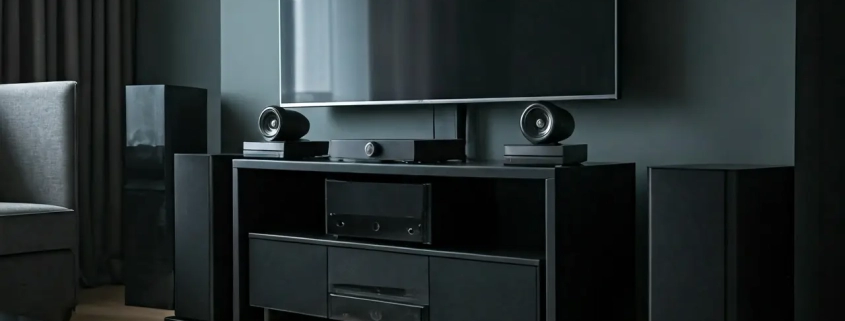Embarking on the journey to elevate your household’s sound experience can be both exciting and daunting. One of the most crucial aspects to consider is the time commitment required for a successful home audio system installation. Understanding how long it will take can help you better plan your project and ensure everything goes smoothly.
Initial Planning and Consultation
Before diving headfirst into your installation, time dedicated to planning and consultations can determine the smoothness and efficiency of the process. Speak with installers and have a clear vision of your desired audio experience. Proper planning ensures you select the right equipment that aligns with your needs and space. Discussing your expectations with professionals and exploring options like whole-home audio systems can offer valuable insights.
Most homeowners tend to overlook the intricacies involved in a seamless installation. It’s crucial to understand that consultations help identify potential obstacles such as wiring complexities and limitations imposed by the architecture of your house. Engaging a specialist can prevent issues like these from escalating. They can guide you through choices, ensuring that your system is future-proof, and compatible with any upcoming technological advancements.
Proper consultation often involves a home visit, allowing experts to assess your space for optimal speaker placement, avoiding the ‘rat’s nest’ scenario commonly associated with DIY installations. This careful examination helps prevent last-minute adjustments once the installation is underway. Remember, time invested upfront in this planning stage can significantly reduce the duration of the entire project.
Understanding the Scope of the Project
Evaluate how extensive your audio system needs to be. Larger homes with multiple zones will naturally require more time than a simple setup. For example, integrating multiple zones requires additional wiring and possibly more complex control systems. Take into account the potential need for outdoor speakers, as these will impact your planning and layout considerations.
If you’re considering integrating existing smart home devices with your new audio system, factor in possible complications. Compatibility with devices like smart assistants, or integration with lighting and security systems, can add layers of complexity to the installation. Thus, ensure that your chosen equipment can seamlessly integrate into your current or planned smart home ecosystem. For detailed guidance on such integrations, explore our audio systems for home archives.
Communication with your installer is key during this stage. Ensuring that everyone is on the same page regarding the project’s complexity helps avoid delays. Whether you opt for an elaborate setup with ceiling speakers like the Polk MC-60 or decide on a simpler configuration, clarity in project scope ensures efficient execution.
Selecting the Right Equipment
Choosing the right components tailored to your audio preferences can take time. From speakers to receivers, ensuring compatibility can streamline installation and minimize potential delays. It’s beneficial to consult resources such as customer testimonials or detailed product descriptions available through trusted vendors.
Opt for equipment known for its reliability and sound quality, as this can save time in testing and adjustments later. Brands like Yamaha and Sonos offer robust options that are often recommended for their quality. Make sure to select equipment that fits not only your auditory preferences but also your spatial and design requirements.
Remember, your equipment choice also dictates future expansion possibilities. It’s wise to pick components that can be easily upgraded as technology advances. This preemptive strategy aligns with recommendations found in our home audio installation archives, ensuring your setup remains cutting-edge without the need for frequent overhauls.
Day of Installation Procedures
On-site installations can vary in duration depending on the complexity. A straightforward setup might take a few hours, while more intricate systems can span several days. Consider that pre-wiring, necessary for complex systems, often expedites the process significantly, preventing any post-construction dilemmas.
Installers need to ensure every component, from speakers to receivers, is correctly positioned and calibrated for optimal sound quality. Weather conditions and the layout of your home, especially if outdoor speaker placement is involved, can also affect timing. Thus, it’s essential to allocate sufficient time for these variables to ensure quality results.
For insight into a streamlined process, the case study of Mark’s new-build whole-home audio system highlights the benefits of pre-planning. Mark’s dedication to pre-construction consultations and strategic planning minimized his installation time substantially.
Testing and Adjustments
Post-installation, thorough testing is essential to ensure optimal sound quality. Be ready for minor adjustments to balance acoustics and achieve the perfect audio environment. This stage ensures that all components work in harmony and that the system is tuned for your unique space.
It’s crucial to verify each speaker’s performance and make necessary adjustments to the system’s configuration. This process might include modifying speaker positions or calibrating sound for specific zones, requiring a keen ear and experience with acoustical dynamics.
Encourage your installer to conduct a walkthrough with you, demonstrating how to use your system efficiently. Such guidance can be invaluable, ensuring that you can maintain and troubleshoot your system independently if needed.
Post-Installation Support
Even after the system is up and running, support services might be necessary to address any issues that arise or to make further enhancements. As technology evolves, ongoing support ensures your system remains current and functional.
For many homeowners, considerations like software updates or integrating new technologies into an existing setup require professional guidance. It’s worthwhile to establish a strong relationship with your installer or a trusted audio experience provider for future needs.
Finally, for a comprehensive view on maintaining and upgrading your system, explore more details about audio system setups to remain abreast of the latest trends and best practices.




